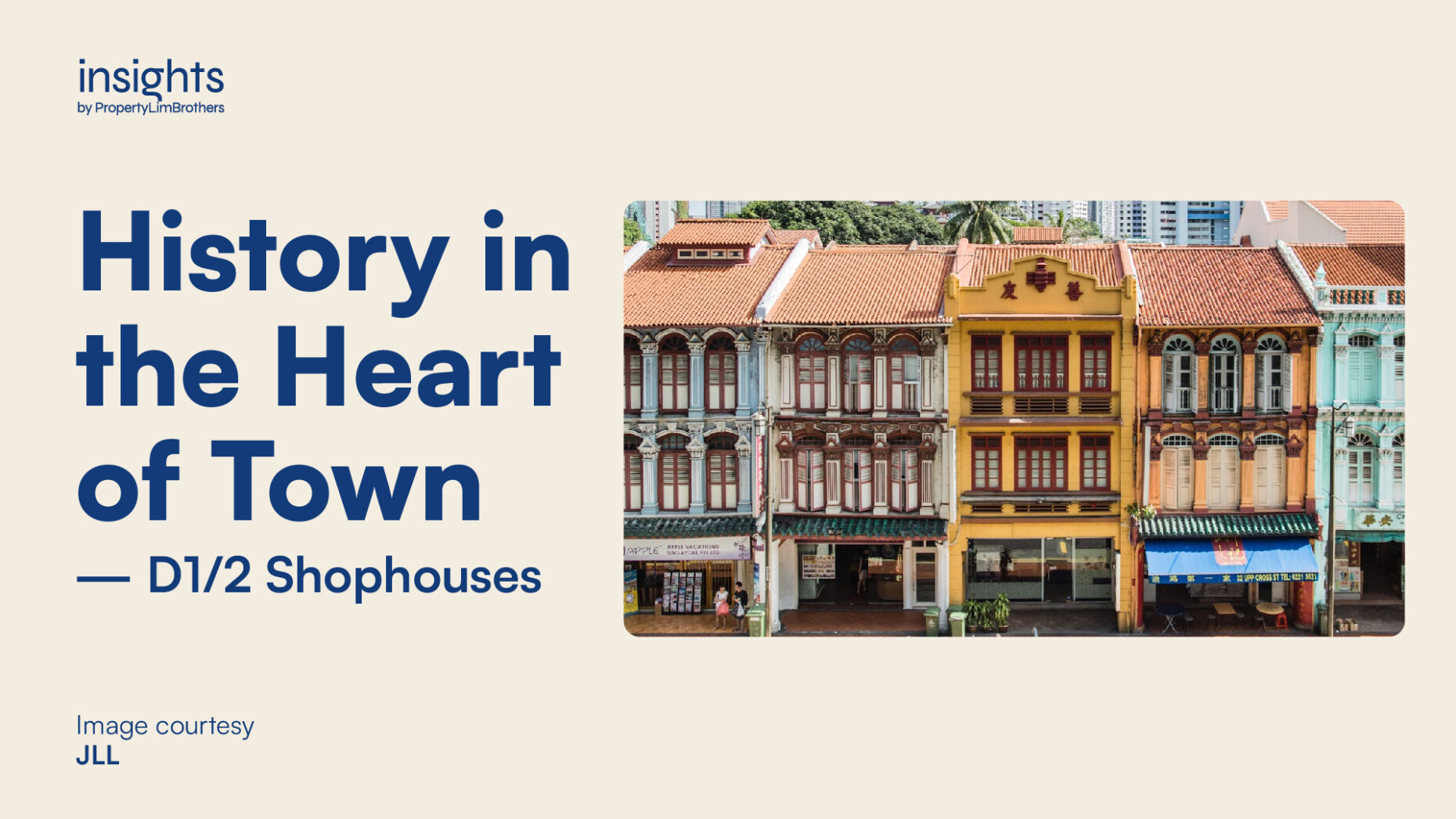
Shophouses in Singapore host a nostalgic and sentimental spirit of the past. It reminds us of how far we have come from a fishing village to a first world city. Beyond humble beginnings, it is a functional relic that represents our heritage and identity. Particularly in the Central Business District (CBD), Shophouses stand in contrast to our modern skyscrapers. In the concrete jungle, Shophouses form the exciting leaf litter where history ferments into our present culture.
Conservation Shophouses make up the majority of shophouses found in the CBD. They are kept in distinct and strategic locations to maintain a lively and stimulating cityscape. Following URA’s city planning, Shophouses punctuated the crowded skylines of our city. They also host some of our beloved food places (especially for office workers in the CBD) and boutique offices. These dynamic pieces of history are definitely actively shaping Singapore even today.
In this article, we look at various Shophouse clusters in District 1 & 2 and take a dive into what makes Shophouses in these districts so special. Specifically, we look at six different conservation areas in district 1 and 2 where the shophouses are, and explore the beauty (& numbers) within.
Singapore’s Migrant Settlement History
Boat Quay, Kreta Ayer, Telok Ayer, Bukit Pasoh, Tanjong Pagar. These four conservation areas make up the Chinatown cluster of shophouses. This is not a formal categorisation of the shophouses in district 1 and 2. Rather, these four conservation areas are tied together with its common history of being an early settlement during the colonial period.
The history of D1/2 shophouses starts in the early 1820s, in the era of Sir Stamford Raffles. Starting with Boat Quay, the area acted as a settlement space for migrant labour. Most commonly from Chinese and Indian descent. The Telok Ayer area along the original Singapore river was also part of the early settlements in the 1820s. Can you imagine? This is actually around 200 years ago.
Over the earlier half of the 19th century into the 1860s, the Chinese settlement expanded to take up the Kreta Ayer areas. In fact, the population of migrants expanded so fast that they had to reclaim land in that area (Telok Ayer Basin) to build shophouses for both residential and commercial use.
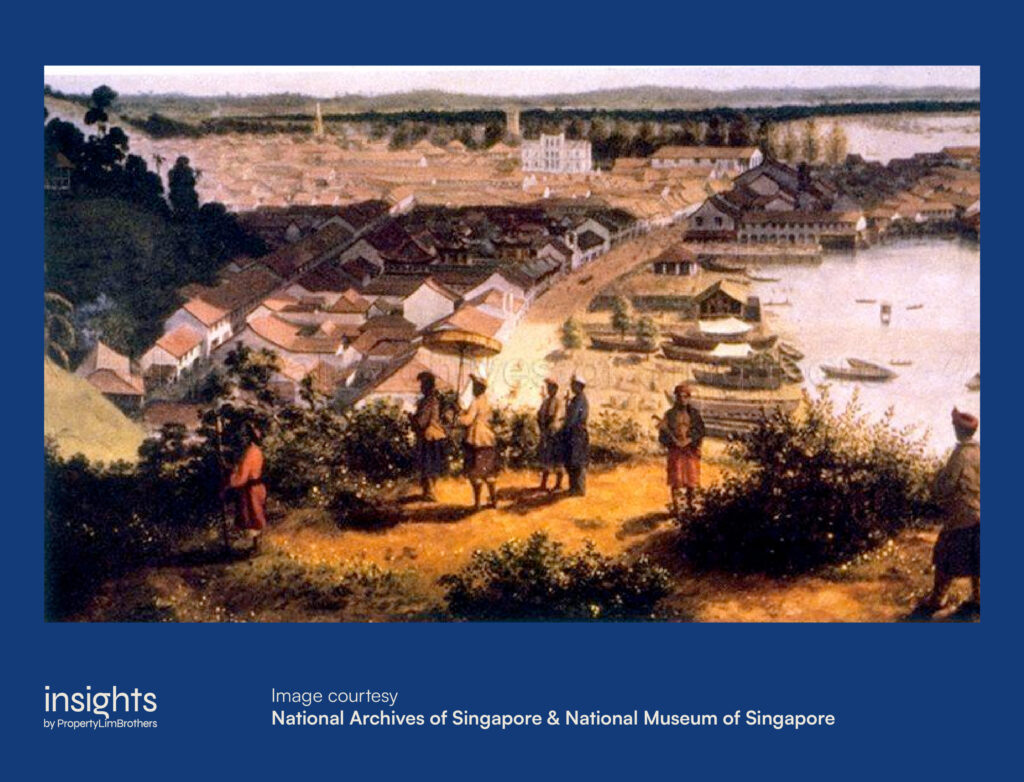
These early settlements were typically found along the Singapore river, which acted as a conduit for trade and transportation. In some sense, early settlements in Singapore naturally adopted the mixed-use approach to real estate development. Working and living were integrated out of necessity, since transportation infrastructure and technology were not modernised yet. Interestingly, city planning today comes back to this concept of mixed-use development. We can only speculate whether it was inspired by the shophouses of old, or just a recycled concept in the city planning trends. Nonetheless, conservation shophouses today still (mostly) follow this mixed-use concept, in a modern interpretation.
A generation later, the migrant settlement in Singapore grew even more into the beginning of the 20th century. Bukit Pasoh and Tanjong Pagar were developed by the growing Chinese population on the south bank of the Singapore river. As this settlement on the south side of the Singapore river continued to develop, overcrowding and sanitation issues began to grow.
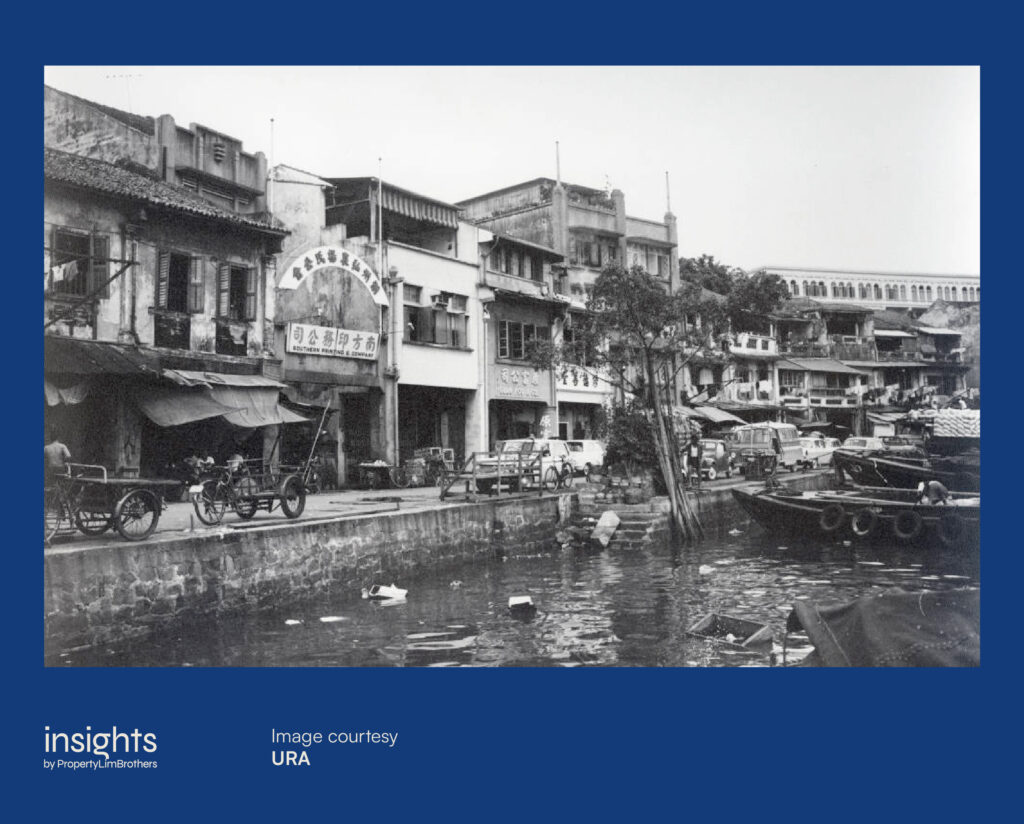
As more migrant labour and business families moved over to Singapore, some level of wealth divide was observed. Wealthier families lived further away from the Chinatown cluster of Shophouses. Before the great cleanup of the Singapore river during the 1970s to late 1980s, you can imagine how the river looked and smelt like. Blair Plains was an example of one of the richer neighbourhoods which were located away from the main cluster of Shophouses.
The conditions of shophouses in the Chinatown cluster were worsened by the onset of war in 1942, with the area badly damaged from bombs. However, the post-independence era of Singapore beyond 1965 saw a rejuvenation of the city-state. Eventually, some Shophouses in the central regions were set aside as conservation pieces by the 1980s.
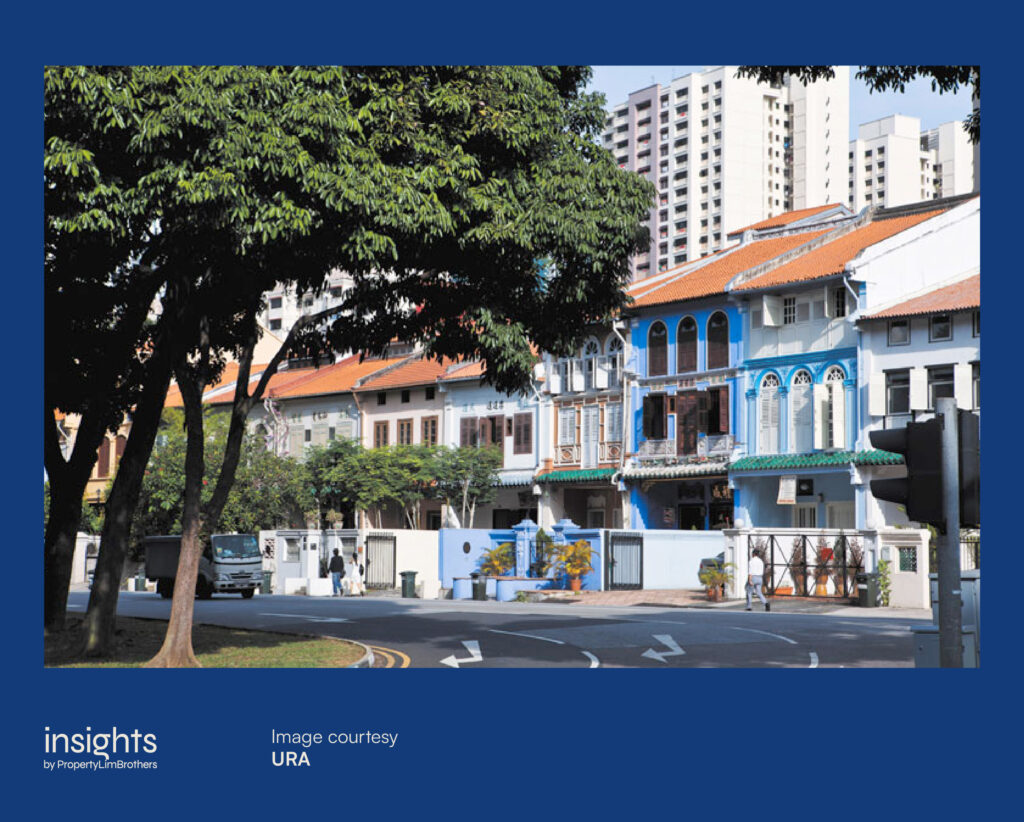
In this brief history of Shophouses in District 1 and 2, we see the history of the rich and poor, of peace and conflict. Living and working. These shophouses embody the history of Singapore before independence, and experienced the humble beginnings of our cutting-edge city. When looking at it from the perspective of numbers, investments, gains, these factors are often overlooked.
Buying, owning, living, and working in a piece of history going so far back is definitely something beyond unique. Perhaps, we can even consider Shophouses to be functional relics, of a forgotten age of hardship and a symbol of progress.
The Fundamentals of D1/2 Shophouses Moving Forward
Looking into the future, what might be some of the reasons that Shophouses in District 1 and 2 will continue to do well? Firstly, the conservation status of Shophouses in District 1 and 2 is unlikely to be removed. Being a piece of history is technically irreplicable. It has acted as an anchor for Singapore’s riverfront development and continues to be a stronghold for Singaporean identity and heritage.
There aren’t going to be any new additions when it comes to Shophouses in the same area. The supply of new Shophouses in District 1 and 2 is likely to be locked in for the foreseeable future. The question on the future worth of Shophouses in these districts is then on the demand for these vintage spaces. Will prospects for conservation shophouses improve in the future?
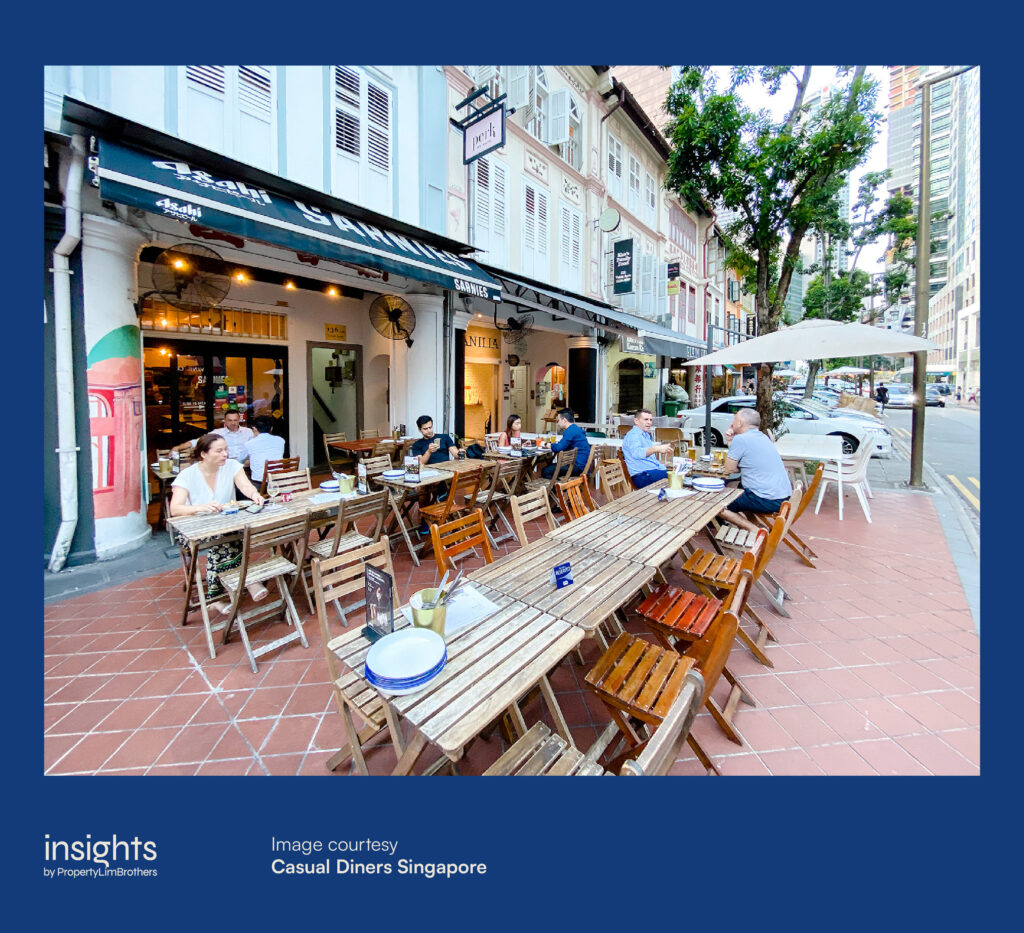
Perhaps so. Co-living spaces, boutique firms, hip cafes are the typical tenants of these spaces as of late. With the bohemian vintage style becoming increasingly mainstream with the upcoming generations (Millennials and Gen Z), the demand for these unique historical pieces might grow. Not only from a rental perspective but potentially as an investment or portfolio piece.
Some younger generations might even hold living in such history pieces at an aspirational level. Co-living spaces like Figment & Cove have some residential shophouses in their portfolio (such as the one on Emerald Hill), they are in demand. It is simply difficult to afford as an individual. But as a business, it shows promise. The space alone is distinctive, and might offer some businesses a level of synergy when it comes to branding, image and status building.
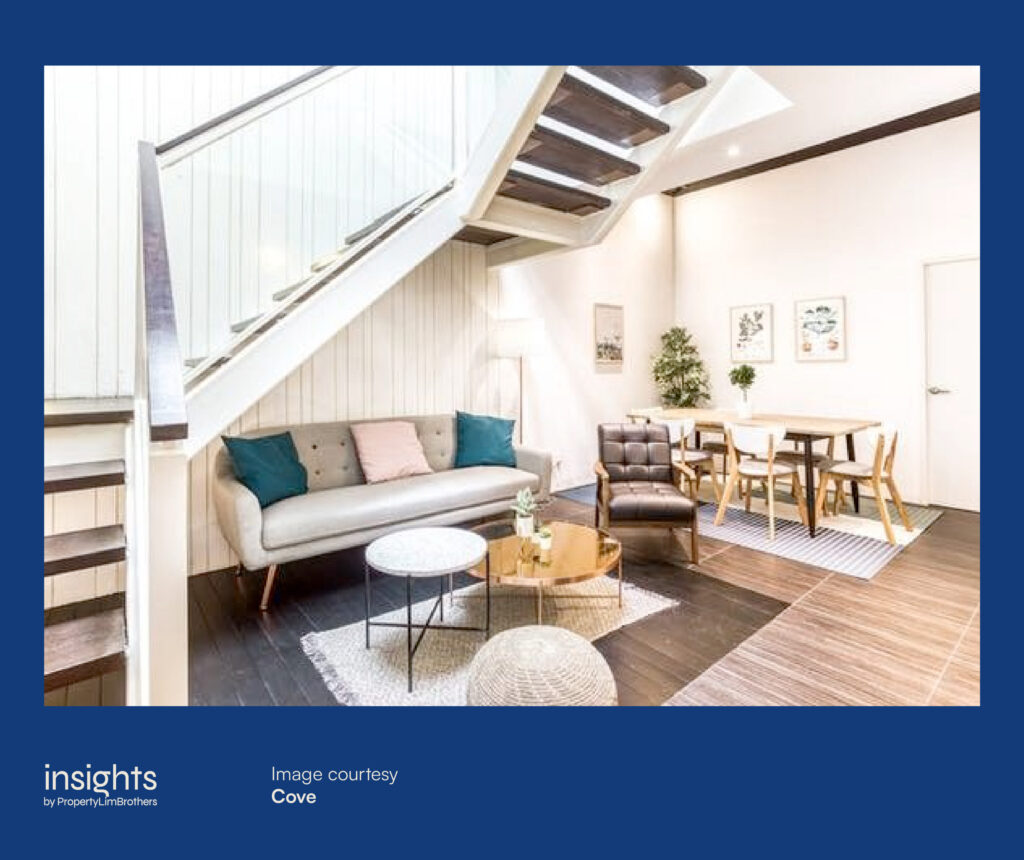
The focus on culture has permeated from the national to the individual level. As a nation, conservation efforts are part of a larger move of treasuring Singapore’s heritage, identity and culture. It is accompanied by efforts in educating the Singapore populace through museums, exhibitions, festivals, and schools. Culture to the nation is a key component of building a unified people. Conserving buildings with history (such as Shophouses) will remain a symbolic step towards this end of preserving our common heritage.
For individuals, norms have gravitated towards a greater appreciation of culture. This is not just the “finer things in life” but the things in life that matter and have meaning. Over time, Singaporean society has become more reflective, affluent, and globalised. Even as we embrace influences from beyond our borders, we crave for something to call uniquely our own. Shophouses fundamentally fit the bill as a niche within the real estate industry in Singapore.
Past Performance of D1/2 Shophouses
Any sensible investor would have heard that past performance is not an indicator of future performance. Yet this simple disclaimer is unable to take into account how trends and historical price action influence the decisions of investors in the market. To say the least, how the past affects the future is complex. We look through some of the past performance of D1/2 Shophouses and its comparables, to gain a broader understanding of the long term trends in the commercial real estate space.
Generally speaking, Shophouses as a commercial property niche have outperformed other commercial properties on growth. Although all these commercial properties have seen a decent rise since 2009, there was a prolonged period of slow decline for other commercial properties from 2013. Shophouses after 2013 have seen a period of volatility and are now seeing rapid growth since the pandemic.

Compared to other Shophouses, D1/2 Shophouses in the CBD have performed astronomically well. Since 2002, D1/2 Shophouses have seen a growth of 712% by 2022 Q2. This is not without considerable volatility from 2013 to 2020. Nonetheless, this level of growth beats residential real estate in D1/2 (although this comparison isn’t exactly an apple-to-apple comparison).
Investors comparing high quantum commercial and residential real estate investments may want to know that D1/2 Shophouses have a historically higher growth rate coupled with much higher volatility. One way to think about this is that ultra high net worth investors with strong holding power really benefited from the strong growth of D1/2 shophouses in the past. Arguably, they perform much better than residential property in the rest of the CCR.

While residential property in D1/2 is not exactly a close comparable to Shophouses in the area, investors may be attracted to commercial property due to the different rules on ABSD. It gives investors more options to increase their exposure to real estate without having to incur ABSD if they choose to invest in shophouses with commercial land zoning. Though there are business risks associated with the rental market for shophouses. The prospects of rental income may be hurt if the economy or businesses in that area are not doing well. On the flip side, if there is a business with high footfall attraction, it naturally benefits other surrounding businesses in the shophouse enclave.
Regardless, D1/2 have shown strong historical performance. It surpasses the growth rate of Shophouses in other districts, other commercial real estate, and residential properties as well. However, the high quantum required to enter this niche probably deters some investors from entering this market. Investments in Shophouses can carry many deal-specific risks. The number of transactions is small, and prices can vary substantially. Location is a key factor as well as.
Because of the nature of D1/2 Shophouses, prospective investors would have to be very strategic and particular about their valuation of the property as well as their entry price. The volatility of the asset shows that there is a large variation, potentially owing to the negotiation process and the market sentiment from high net worth investors.

Zooming into just the past 3 years, the volatility of Shophouses in D1/2 obscures its growth potential. For investors highly averse to volatility, Shophouses in other districts might be easier to stomach. Prices for shophouses in other districts are climbing steadily and much faster than other residential properties. However, it might be harder to find undervalued options as compared to D1/2. The volatility in D1/2 shophouses may present some interesting value plays if prospective buyers are intune with the market and have solid understanding of shophouse valuations.
The potential of high gains can be very enticing for investors. However, investors would need to be well informed and equipped with segment-specific knowledge on the shophouse niche in order to properly navigate the volatility in this shophouse market. Being connected to the right sources of expertise will help to ascertain if shophouses fit your investment objectives and risk profile.
Closing Thoughts
Shophouses in the heart of the CBD are a distinctive part of the city’s landscape. It houses the history and heritage of Singapore. As a functional relic in modern times, Shophouses in town have retained its mixed-use nature to accommodate boutique offices, hip F&B outlets, and even co-living spaces. Eventually, we might find more innovative use of such spaces in Singapore
The fundamentals of Shophouses remain strong moving forward. Singapore has been holding on to its approach of building a strong local identity and culture. The conservation of shophouses and the preservation of this colonial heritage is a part of this larger move towards the appreciation of Singaporean history and culture.
The past performance of D1/2 Shophouses have been exceptionally strong, albeit volatile as of late. Nonetheless, it remains an exclusive niche which presents many challenges and opportunities. With the right expertise to navigate this volatile market, investors stand much to gain from this segment of the commercial real estate market. If you wish to find out more about the Shophouse segment in Singapore and how it fits into your property portfolio, contact us here.








